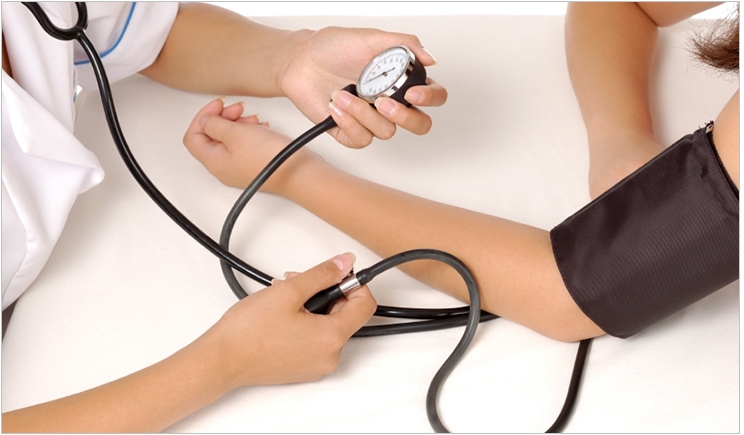
It seems like dentists already have lots to do during typical procedures. Yet the University of Buffalo School of Dental Medicine also requires its pre-doctoral students to assess the vital signs of all of their patients at every clinic appointment, including blood pressure, pulse rate, and pulse rhythm. These students are required to assess the capillary blood sugar (CBS) of all diabetic patients at every clinic appointment as well.
“The rationale was to train our students that these vital parameters are a normal component of the medical model for a patient workup, and our students should learn that medical model of patient assessment,” said Michael N. Hatton, DDS, MS, of the department of oral diagnostic sciences at the school. “We felt it would serve them well in their future professional lives to assess their patients in a medically templated way.”
Plus, this information provides baseline data in case of a medical emergency at the school, and personnel then could initiate resuscitative efforts in the best manner. With about 50,000 patient visits each year at the dental school, with many patients in their elder years, there are some high risks during dental care. And on a more practical level, these baseline figures would assist in a legal defense should the school face a lawsuit for a poor outcome.
“All students purchase blood pressure monitoring devices and stethoscopes. The school purchases glucometers and necessary accouterments for assessing CBS,” said Hatton. “All pre-doctoral students are taught blood pressure and blood sugar assessment techniques in their second year and assess all their patients, without exception, in their third and fourth years. They are competency tested on these techniques in their third and fourth years. Again, blood pressure for every patient, CBS for diabetic patients, every visit.”
But when the school surveyed its recent graduates to see if they maintained these practices in their professional lives, it found that only 77% of them generally assessed blood pressure, and only 23% assessed the CBS of diabetic patients—and most of these graduates didn’t follow the school’s strict policies in conducting these assessments, despite their training.
The obstacles to consistent performance of these assessments include a perceived “lack of time” on the part of the practitioners and a perception that they aren’t necessary in dental visits on the part of some patients and in some practices. In fact, when the school began including these assessments as part of its curriculum in 2010, some faculty felt that they were a waste of the dentist’s time, Hatton said, though that attitude has faded away.
“We found that graduates generally do not adhere strictly to what they were taught after graduation. They are apt to assess blood pressure on a case by case basis and more frequently than CBS assessment,” said Hatton. “These assessments may not be highly valued by dentist-owners who graduated long ago.”
These assessments often have practical use during dental procedures, too. For example, the CBS baseline enables dentists to make necessary treatment options based on glucose levels. Diabetic patients who have taken their anti-hyperglycemic medication but who have not eaten may experience dangerously low glucose levels after a lengthy appointment.
“If the glucose reading is what faculty deem low, we have the option of giving the patient a glucose-containing fluid to raise glucose levels prior to treatment,” said Hatton. “We also have the option of reassessing glucose levels prior to exiting the building to make sure they are acceptable for the patient to get home in a reasonably safe manner from a blood sugar standpoint.”
Without a blood sugar assessment, consequences could be dire. A patient who succumbs to hypoglycemia, for instance, could be mistaken for someone who has simply fainted. Unless sugar is introduced into the patient’s system quickly, neurological deficits are possible—and introducing sugar into such an unconscious patient could be very difficult for dentists who aren’t trained in intravenous administration. Blood pressure can be a sign of danger, too.
“In one case, we diagnosed a third-degree heart block, often associated with high morbidity and mortality, simply by noting the abnormally low blood pressure and pulse, getting the patient into care, and having a pacemaker placed within 36 hours,” said Hatton. “That patient is still a patient of the school, but much healthier than when we found the abnormality. She was completely asymptomatic prior to our intervention. Dentists can save lives by doing simple vital assessments on their patients.”
Dentists who want to learn more about the role of vital signs in dentistry should read The ADA Practical Guide to Patients with Medical Conditions, edited by Lauren Patton, DDS, and Michael Glick, DMD, and Dental Management of the Medically Compromised Patient by James W. Little, DMD, MS, et al, Hatton recommends. He also suggests joining the American Academy of Oral Medicine and reading its associated journal.
“The Academy provides pathways for non-oral medicine dentists to achieve the status of Fellow,” Hatton said. “The annual and semi-annual meetings also provide a broad array of medically based issues for the practicing non-oral medicine trained dentist.”
Related Articles
Design Your Medical History Form for Better Oral-Systemic Treatment Planning


